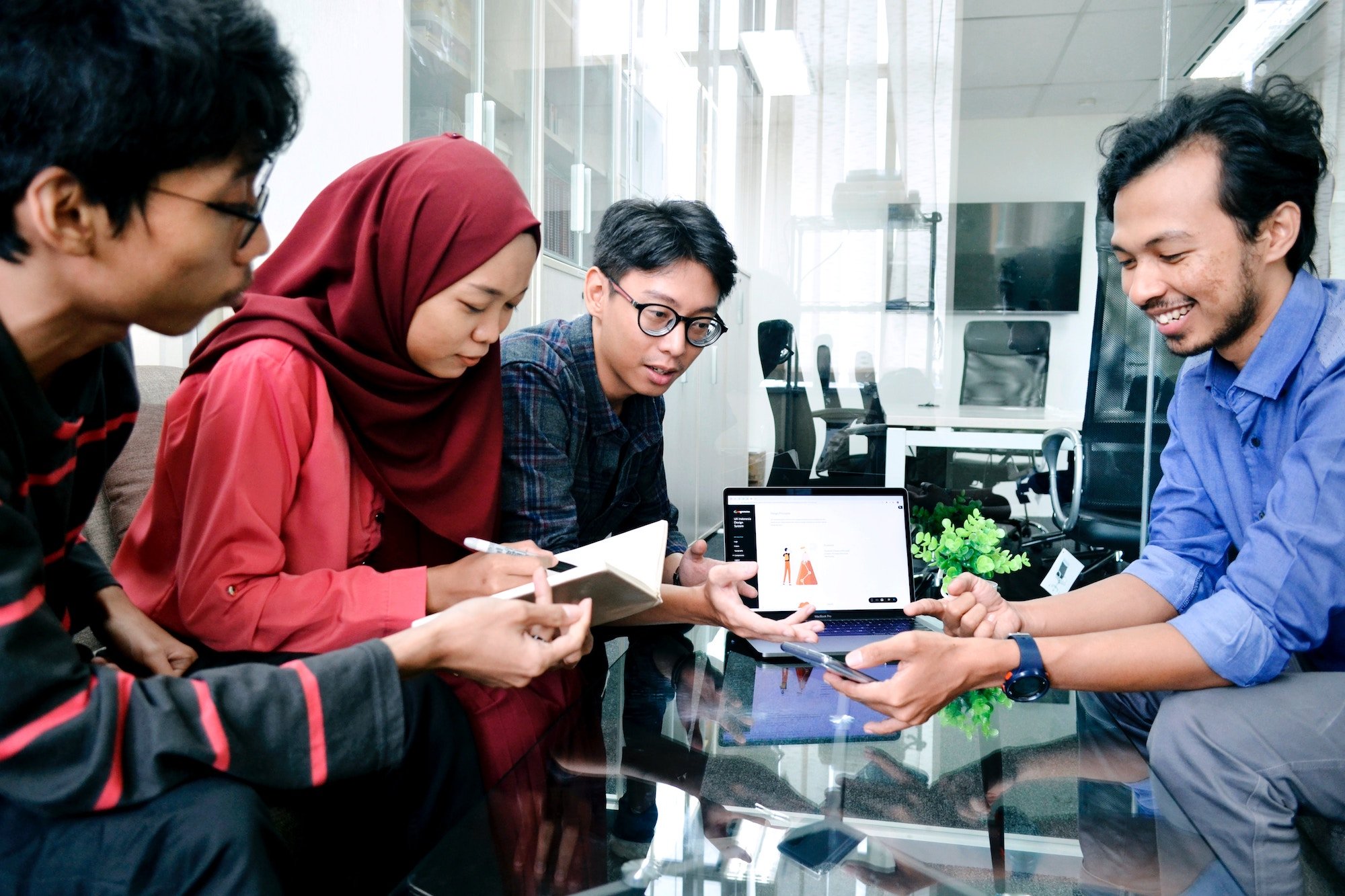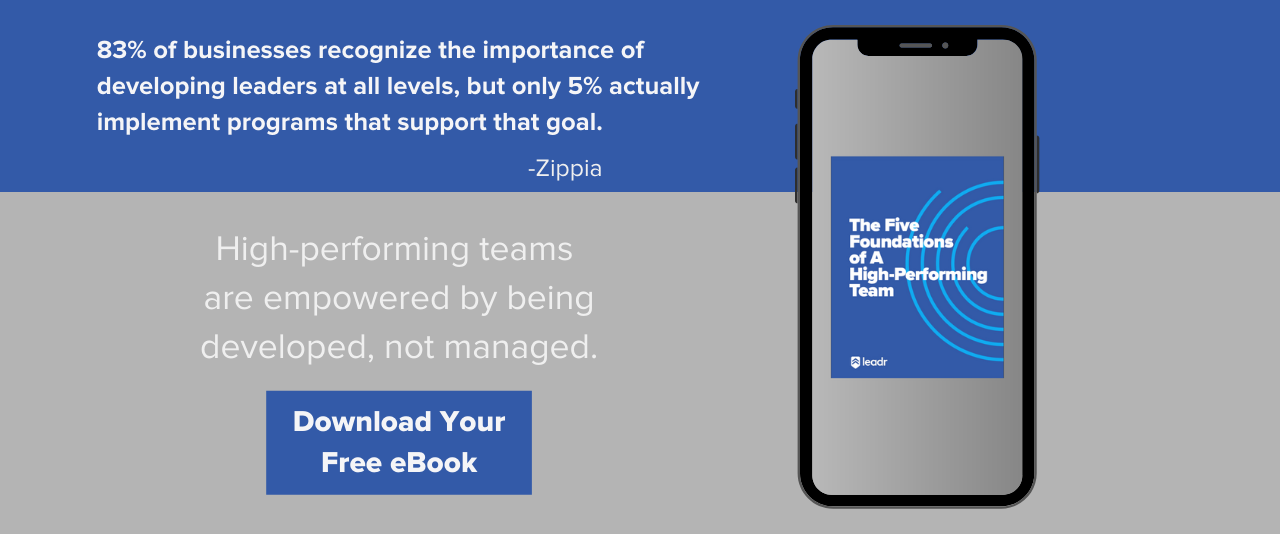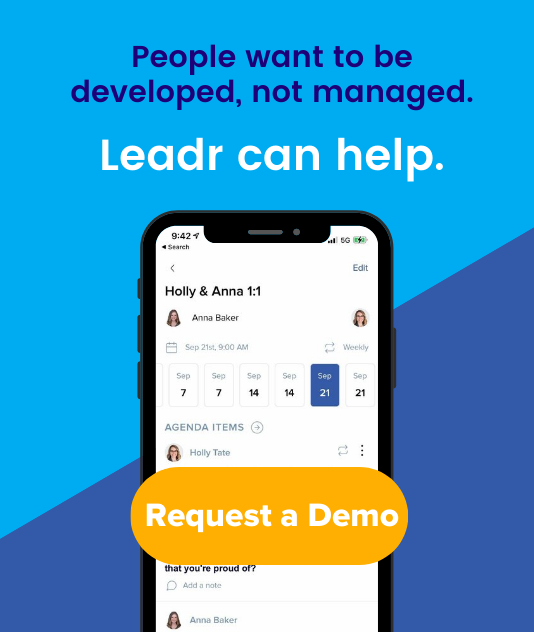Your ultimate guide to solving for employee engagement and retention
We now live in an unprecedented employee-driven market where employees are saying no to jobs that don't fit their needs even at the risk of unemployment.
So, what is the solution to preventing turnover and retaining talent?
Introduction
The Great Resignation. Quiet Quitting. Career Cushioning.
Each of these phrases represents a problem for managers and HR departments across the United States. People are disengaging and leaving their jobs in record numbers.
- A 2021 Work Institute report found that the overall turnover rate in the United States is around 19.3%, which is a 34% increase from 2020.
- The 2022 Retention Report found that over two-thirds of turnover was for more preventable reasons, such as career opportunities, work-life balance, and better management.
- According to data from the Bureau of Labor Statistics, the median tenure for employees in the United States is around 4.1 years.
- A study by Mercer found that the cost of replacing an employee ranges from 100% to 300% of that employee’s salary, depending on the level of the role.
With millions of jobs sitting vacant every month, employees have all the power to find flexible, well-paying jobs. And employers are left to figure out how to attract and retain the talent they need to be successful.
In other words, we now live in an unprecedented employee-driven market where employees are saying no to jobs that don't fit their needs even at the risk of unemployment.
So, what is the solution to preventing turnover and retaining talent?
The solution is found in making the change from people management to people development.
What is people development?
People development is a shift in leadership habits.
It’s recognizing the potential of each person on your team and investing in their growth in order to increase their workplace satisfaction and productivity, which ultimately gives back to your bottom line.
People development aims to improve individual and collective performance, promote personal growth, and contribute to the organization's overall success.
Effective people development changes the dynamic between managers and their teams by empowering those managers to become coaches and encouraging every employee to have a voice.
How to practically implement people development into your culture
Research tells us that there are three primary characteristics that high-performing and highly-engaged teams share: rapport, maximization, and clarity.
- Clarity - Do you know what’s required of you to be winning in your role?
- Maximization - Do you have the resources you need to perform at your best in your role?
- Rapport - Do you feel connected to your organization’s mission and goals?
How do you achieve the three components of a highly-engaged team?
We’ve broken the process into 5 foundations of effective people development.
In the following sections, we will show you the people analytics data that support each of these five foundations and how to implement them at your organization for increased employee engagement and retention.
It’s important to remember that each of these foundations isn’t a one-and-done process. They are each habits that should become a continuous part of your manager/employee interactions in order to fully make the shift from people management to people development.
Breaking Down the 5 Foundations of People Development
Recognizing Unique Strengths
In any workplace, employees are the driving force that propels the organization toward success. However, each employee brings a unique set of skills and strengths to the table, and recognizing and utilizing these individual strengths can make all the difference in achieving organizational goals.
Dig the Data
- Employees who feel their strengths are utilized are 6 times more likely to be engaged in their jobs compared to those who don’t feel their strengths are utilized. (Gallup)
- 90% of employees who use their strengths daily report higher job satisfaction. (Gallup)
- Employees who feel that their strengths are utilized are 15% less likely to leave their job than employees who feel that their strengths are not utilized. (Gallup)
- 67% of employees who feel that their strengths are utilized are more likely to stay with their current employer for the next year. (Globoforce)
- Companies that focus on employee strengths have a 38% higher employee engagement rate and a 44% higher retention rate than companies that don’t. (Gallup)
What’s the Plan?
1. Conduct a Personality Assessment
There are a variety of online assessments and tools that can you identify the unique personality and strengths of your employees.
The Enneagram measures how people connect, react to, and perceive the world. The DiSC measures behavioral tendencies and preferences. The Myers-Briggs assessment identifies areas of strength based on a person’s use of perception and judgment. StrengthsFinder and Working Genius highlight lists of strengths that each individual has.
By analyzing the results of multiple assessments, you begin to see a multi-faceted picture of your team members and how they can best contribute to their team.
Personality assessments are also great for understanding each employee's communication, feedback, and workstyle preferences.
2. Ask Employees
One of the most straightforward ways to identify your employees' strengths is to simply ask them. What do they believe their strengths are? How do they think they can utilize their strengths in their current role? How do they see their strengths being used in future roles?
Use these digital conversation cards to get conversations started more naturally.
3. Observe Performance
Paying attention to the tasks and projects that your employees excel in is another great way to identify strengths. Look for patterns in their work and identify what they do well consistently. Taking note of these strengths can help you to identify opportunities and roles within your organization that might be a good fit.
4. Use Performance Reviews
Performance reviews provide a unique opportunity to identify patterns and trends. Spending time reviewing an employee's accomplishments and peer feedback can highlight areas where they excel and how they can continue to utilize those strengths moving forward.
5. Provide Opportunities for Growth
An employee's current role sometimes does not allow them to properly demonstrate their strengths. You may discover strengths you didn’t know they had by providing them with new opportunities within their role or encouraging their growth through a personalized development plan. We’ll talk about that more in the next section.
Knowing the areas in which your employees excel, and then utilizing those strengths, will increase engagement and retention, and help meet your organizational goals by having the people in the right seat.
Remember, coaching also involves helping employees grow in their shortcomings. So, it’s equally important to unpack each employee’s areas of growth so you know how to coach each person toward constant improvement.
Personalized Development Plans
Developing and retaining key talent is crucial to the success of your organization. Numerous workplace studies show that today’s employees expect more than pay or title. They seek careers where they can learn, grow, be challenged, and be valued for the ideas they bring to the table. Employees today want to contribute to a larger purpose.
Dig the Data
- Employees who received regular feedback and opportunities for growth were 3.5 times more likely to be engaged at work compared to those who did not receive such opportunities. (Gallup)
- 94% of employees would stay at a company longer if it invested in their career development. (LinkedIn)
- 68% of employees said that training and development is a company’s most important policy for retaining talent. (CareerBuilder)
- Employees who are satisfied with their opportunities for professional development are more likely to stay with their current employer. (SHRM)
So, how do you keep these employees engaged and fulfilled? Utilize personalized development plans (PDPs).
Personalized development plans are a win-win for your organization and your employees. By creating growth plans, your team members will develop an increased sense of self-awareness, identify actionable steps to develop their careers, and achieve a greater sense of personal fulfillment. Your organization will benefit from the improved performance that the clarity and purpose of a personal growth plan produces.
What’s the Plan?
Creating a personal growth plan involves identifying the strengths and areas for improvement, setting goals, and creating a plan to achieve those goals.
1. Identify the strengths of your employees
The beginning of any well-crafted personal growth plan involves identifying the strengths and weaknesses of your employees. Feedback from colleagues and managers, as well as past performance reviews, can help to identify these areas.
2. Set goals
Based on the identified strengths and areas of improvement, set specific, measurable goals that align with the career aspirations of your employee. Goals should be relevant to their current job responsibilities and align with their long-term career goals.
3. Create an action plan
A detailed action plan will help your employees identify the resources needed to achieve their goals. This can include training programs, mentorship opportunities, or networking events. The sky’s the limit.
4. Track progress
Once goals have been set, and action steps identified, monitor progress with frequent check-ins. By tracking progress, steps, resources, and timelines can be adjusted as needed. These check-ins also allow opportunities to celebrate successes and accomplishments.
Here’s a webinar walking you step-by-step through the process of implementing PDPs. You’ll even get a free template to help you get started.
Setting Clear Goals
The practice of setting goals has been used throughout history to empower ordinary individuals to achieve great things. This power can be used by people at all levels of your organization. By setting clear, specific goals, employees and teams can improve their focus, motivation, and overall performance, and contribute to the success of their organization.
Using goal setting with your teams can significantly impact employee retention. Setting goals with your team members leads to opportunities for growth, improved communication, and an increased sense of purpose.
“Without goals, and plans to reach them, you are like a ship that has set sail with no destination.”
-Fitzhugh Dodson,
Clinical psychologist, lecturer, and educator
Dig the Data
- 93% of employees would stay at a company longer if it invested in their careers. (LinkedIn)
- Employees who receive regular feedback are 3.5 times more likely to be engaged in their workplace than those who do not receive feedback. (Clear Review)
- 73% of employees who report feeling a sense of purpose at work are satisfied with their jobs, compared to only 64% of employees who do not feel a sense of purpose. (Deloitte)
What’s the Plan?
Effective goal setting is a skill that takes time to develop. Here are seven tips to help your teams set clear goals:
1. Be specific
Goals need to be specific and well-defined. The more specific a goal, the easier it is to know exactly what must be done to achieve it.
2. Write them down
All goals should be written down and kept somewhere visible. This will help you and your employee stay focused on what they want to achieve on a daily basis.
3. Make them measurable
Ambiguity in a goal makes it difficult to determine whether the goal has been achieved. Goals that are measurable can be tracked and finished.
4. Set a timeline
Goals without a timeframe tend to get placed on the back burner when things get busy. Setting a timeline for goals will help your employees to stay on track and motivated to work towards their goals.
5. Be realistic
Goals need to be achievable and realistic. Setting unattainable goals can be demotivating and may discourage your team members from trying again in the future.
6. Prioritize
When multiple goals are set, focus on the most important ones first. This helps keep your employees from feeling overwhelmed and allows them to progress toward their goals.
7. Review and adjust
Regularly discuss your employee’s goals and adjust them as necessary. As time goes by, priorities and circumstances may change, requiring a change in goals as well
Here are 5 practical steps to get started with effective goal setting.
1-on-1 Meetings
How many of your HR problems would be solved if you documented every 1:1 meeting? You would have a record of conversations that could be used for accountability, performance management, professional development, and future planning.
By taking a few minutes to create a record of each 1:1 meeting, you could potentially save yourself hours later.
Not to mention, 1:1 meetings are where manager/employee trust is formed. Open communication, opportunities for feedback and alignment, and space to connect are just a few benefits of regular 1:1 meetings. Ultimately, 1:1 meetings are where rapport, maximization, and clarity are built.
Dig the Data
What’s the Plan?
Holding regular, consistent 1:1 meetings and documenting those meetings is the foundation of a strong
1. Set an Agenda
To ensure that your 1-on-1 meetings stay focused and productive, both the manager and employee should have an agreed-upon agenda before the meeting. This can include discussing any current projects or goals, addressing any concerns or challenges, and identifying any development opportunities.
By documenting this agenda, managers and team members can use it to plan future 1-on-1 meetings more effectively. Future meetings can be planned to ensure that any outstanding issues are addressed, and that progress is being made toward goals.
2. Listen Actively
Both the manager and employee should practice active listening, which means giving their full attention to the other person and asking questions to gain a deeper understanding of their perspective. This can help build trust and ensure that everyone is on the same page.
Taking time to document the conversations during 1-on-1 meetings can help increase accountability. Both you and your team members will have a record of any commitments or action items that were discussed and keeps everyone on the same page about the progress that is being made.
3. Provide Feedback
Both you and your employee should provide feedback to each other, whether it’s about performance, communication, or any other area that could use improvement. Constructive feedback should be specific, actionable, and delivered in a respectful and supportive way.
Documented feedback can help provide a record of an employee’s performance over time, and any training or development needs that may arise.
4. Celebrate wins
It’s important to take time to acknowledge and celebrate successes, no matter how small they may be. Recognizing progress and achievements can help boost morale and motivation, and reinforce a sense of purpose and accomplishment.
Documenting these wins can help to track any new skills or knowledge gained, which is crucial for tracking a team member’s performance over time.
5. Follow Up
Both you and your employee should follow up on any action items or commitments made during the meeting. This helps ensure progress is made, and everyone is accountable for their responsibilities.
Documentation provides a clear record of what was discussed, any feedback given, and any goals or objectives that were set. This can help prevent misunderstandings or miscommunication down the line.
When you hold regular 1:1 meetings with your team members, you positively impact employee retention by investing in the growth, success, and well-being of each employee.
Don’t wait to start having more effective 1:1 meetings. Here’s the ultimate guide on getting started with 1:1s.
You can find other quick 1:1 meeting resources here.
Giving (and Recieving) Effective Feedback
Imagine that you were tasked with constructing a piece of furniture but never given any instructions. You could probably figure out the general idea, but you wouldn’t know for sure that you were on the right track.
When your team members try to fulfill their responsibilities without effective feedback from their managers, it’s much like trying to construct furniture without instructions. Communication breaks down, motivation evaporates, relationships crumble, and job satisfaction is non-existent.
Providing effective feedback is crucial to providing clarity, maximization, and rapport, and creating a healthy work environment that your employees want to be a part of.
Dig the Data
- Employees who receive regular feedback have three times higher engagement levels and are more likely to remain with their current employer than those who do not receive feedback. (Gallup)
- Employees who receive specific, targeted, and actionable feedback are more likely to feel valued and engaged in their work, which can lead to higher job satisfaction and retention. (Harvard Business Review)
- Organizations with a strong culture of feedback have turnover rates that are 14.9% lower than those without such a culture. (SHRM)
- Employees who receive feedback that is both positive and negative are 22% more likely to stay with their organization than those who only receive positive feedback. (Leadership IQ)
What’s the Plan?
Not all feedback is created equal. Effective feedback helps employees improve their performance, enhance motivation, and contribute to a positive work environment.
1. Be specific
When giving feedback, be specific about what you are commenting on. Avoid generalities and focus on specific behaviors, actions, or outcomes.
2. Be timely
Provide feedback as soon as possible after the behavior or action occurs, while it is still fresh in everyone’s mind.
3. Be objective
Feedback should be objective and based on observable behaviors or outcomes. Avoid making subjective judgments or personal attacks.
4. Be balanced
Provide both positive and constructive feedback, focusing on what was done well as well as areas for improvement.
5. Be clear
Clearly communicate your feedback and make sure the employee understands what you are saying. Use concrete examples to illustrate your points.
6. Be supportive
Give feedback in a supportive and constructive manner, focusing on helping the employee improve rather than criticizing or blaming them.
7. Be action-oriented
Provide actionable feedback, provide specific suggestions for improvement and help the employee develop a plan to address any issues.
8. Be open to feedback
Encourage dialogue and be open to receiving feedback from your employees as well.
Hungry for more tips for providing effective feedback? This on-demand webinar is packed with helpful tips.
Once you implement the 5 foundations of people development, you’ll want to know if your efforts are working. How can you measure these changes in engagement over time?
People analytics data.
The People Analytics Solution
People analytics is a rapidly growing field that uses data to better understand and lead people in the workplace. By collecting and analyzing data on employee behavior, companies can gain insights into how to improve employee engagement, performance, and retention.
Employee engagement is a crucial factor in the success of any organization. Engaged employees are more productive, creative, and committed to their work, leading to better business outcomes.
Unfortunately, disengagement & turnover are at an all-time high, despite more than $366 billion spent by employers to combat it.
So, what are we still doing wrong?
We're not listening to the data (and therefore changing our leadership habits) telling us that people want to be led and developed, not managed.
If we want to engage and retain our employees, we have to make the change from people management to people development.
Even if you have a stellar culture, change is the one constant in life. When you experience turnover, growth, or any kind of change, you want to be tracking employee engagement to know when things are trending downward before a problem takes root. You want to have data to point back to.
This is where people analytics comes in.
One of the key benefits of using people analytics to track employee engagement is that it enables companies to take a more data-driven approach to people development. By using data from various sources, people analytics can provide a more comprehensive and objective picture of what is happening in an organization. Data gathered from such sources as employee surveys, HR systems, or social media can be used to track turnover rates, absenteeism, and performance metrics.
When this data is analyzed, it can reveal trends in engagement or disengagement that allow leaders to develop targeted interventions to address the root cause of an issue, not just the symptoms. Careful, continuous monitoring of people analytics data can also reveal issues before they become problematic, allowing companies to take a more proactive approach.
The field of people analytics is a data-driven and goal-focused approach to studying the problems faced by organizations and then creating sustainable solutions. One of the biggest challenges facing organizations today is employee retention, and retention can be directly tied to employee engagement.
Looking for a people analytics solution to help you make more intentional steps towards a thriving culture? Look no further. Leadr Insights has you covered.
While there are dozens of employee engagement software solutions, Insights is the only one that uses these five foundations to track employee engagement and offer actionable next steps on how to improve.
Not ready to implement a solution but want to learn more? You can do so here.
Looking Forward
Disengagement and dissatisfaction are growing problems in the modern workforce, but it doesn’t have to be a problem for you. By implementing these 5 Foundations and monitoring their effectiveness with people analytics, you can turn the tide and create a culture that employees want to be a part of.
Leadr’s people development software is designed with each of the 5 Foundations in mind. Our platform makes it easy to set goals, schedule 1-on-1 meetings, and facilitate feedback, all while recognizing the unique strengths of your employees to help them grow. We’ve included easy-to-use, data-tracking tools to help you identify engagement trends and solve the problem of retaining your employees.
Request a custom walk-through of the platform to see how Leadr can help your team create more intentional leadership habits that incorporate the 5 foundations of people development, contribute to clarity, maximization, and rapport, and ultimately increase employee engagement and employee retention.
Share this
You May Also Like
These Related Stories

The Secret To Hiring And Retaining Gen Z

Beyond Trendy Perks: What Employees Really Want for a Rewarding Workplace Experience










No Comments Yet
Let us know what you think